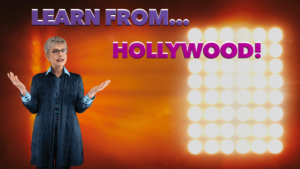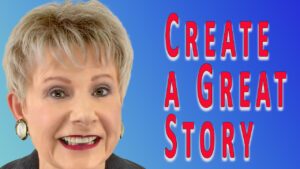When we reminisce about Hollywood, it’s often the stories that movies tell that captivate us the most. Screenwriting teacher Robert McKee eloquently states, “Stories are the creative conversion of life itself into a more powerful, clearer, more meaningful experience. They are the currency of human contact.”
Storytelling: The Cornerstone of Effective Leadership
Many of us are natural storytellers, captivating our audiences around water coolers and meeting tables. Yet storytelling isn’t limited to casual conversations. It’s a vital skill that business leaders, sales professionals, and even engineers can hone to engage and persuade. As someone who has spent decades teaching effective storytelling in corporate settings, I’m a firm believer in the impact of a well-crafted narrative.
The Trap of Data Overload
In the realm of executive speech coaching—a core facet of my work—I frequently encounter leaders armed with spreadsheets and bullet points. I challenge them. “What do you want your audience take away from your message?” Often, we unravel layers of data to reveal the “currency of human contact,” as McKee puts it. The story hidden within the numbers not only educates but resonates, leaving a lasting impression.
Visual Aids: A Double-Edged Sword
Visual aids like PowerPoint slides and graphs can be useful and often also problematic. In a recent training session with engineers, when we removed many of their dense slides, they all agreed, “Wow, when we have less slides, our message has more impact.”
Visual aids should support your story, not become the story. Far too many brilliant professionals make the mistake of building presentations around slides rather than formulating a compelling narrative first. This is complicated when a team creates the deck and others are delivering it. If you need all the details have two decks. The less-dense to go with your presentation and the other use as the leave behind. Or for those who can’t attend.
The Power of Emotional Connection
When delivering your message, the goal is twofold: engage both intellectually and emotionally. You can achieve this by focusing on the human element. Look your audience in the eyes, keep your slides simple, and remember, they are there to hear your story, not read it.
Crafting a Story That Resonates
To create a narrative that captures the interest of your target audience, it’s crucial to intertwine your story with their needs and interests. If you’re addressing a sales team, for example, regale them with tales of satisfied clients whose lives or businesses improved due to your product. Use actual quotes from clients to create realistic and engaging dialogue within your story.
Hollywood Storytelling 101: A Simple Formula
Start with Interesting Characters: Populate your story with relatable figures, be they satisfied customers or employees who went the extra mile.
Add Sparkling Dialogue: Direct quotes or dramatized conversations add authenticity and keep listeners riveted.
End with a Lesson: Conclude your narrative by highlighting the essential insights gained, neatly tying the elements together to deliver a meaningful message.
Remember, storytelling is not just an art; it’s a necessary skill in business. By harnessing the power of narrative, you can turn every presentation into a blockbuster success.
Need help?
“You are a true Rock Star speech coach. Thank you for all of your advice.” – Mark Schulman, Drummer for Cher and Pink
Patricia Fripp is amazing. As a speech coach, you’ll never find anyone with her wisdom, experience, and ability.” Bhavin Shah, CEO & Founder, Moveworks
“Without your guidance, I would not have been able to accept invitations to Cambridge University and speak to 10,000 on the platform with President Obama.” Angela Cearns, Chief eCommerce Officer, Yum
“Your coaching, along with FrippVT, helped us land one of our biggest sales ever.” Mike Stryczek, President & CEO, AB&R


